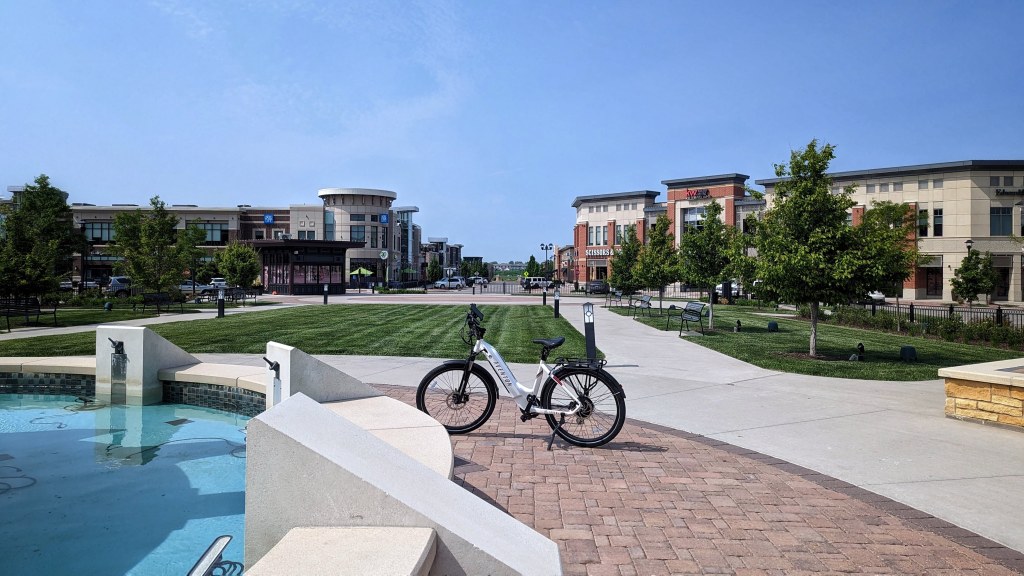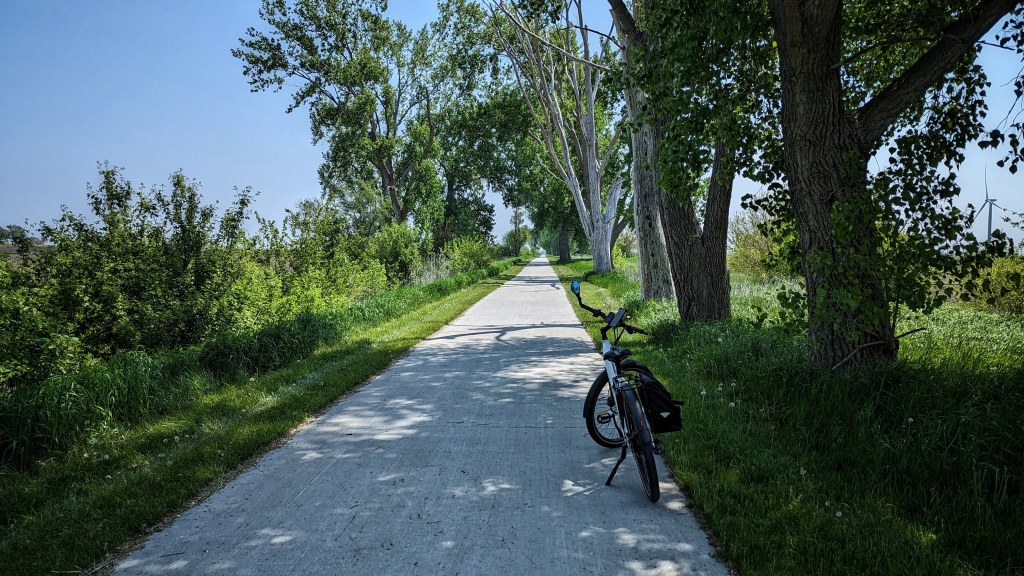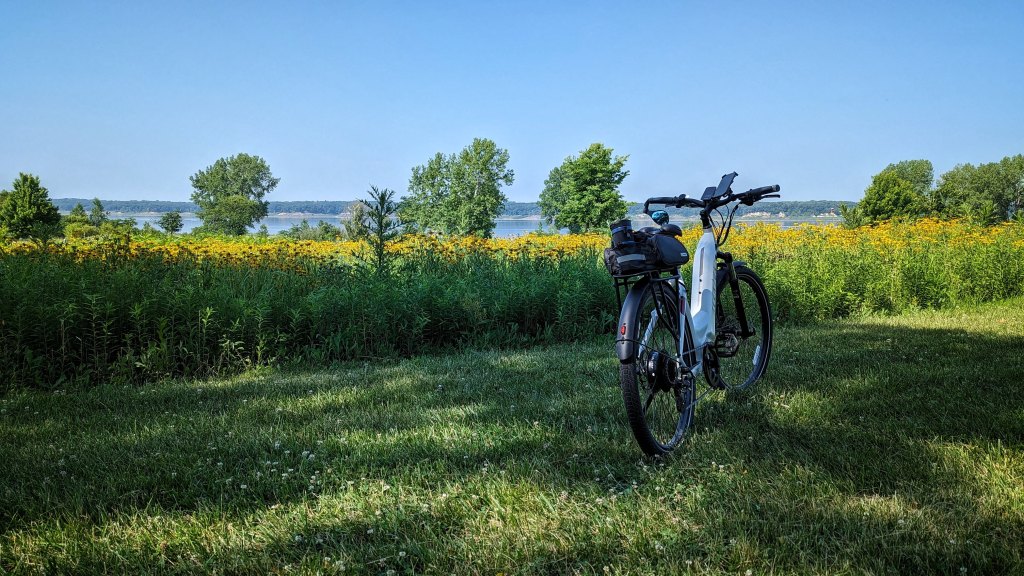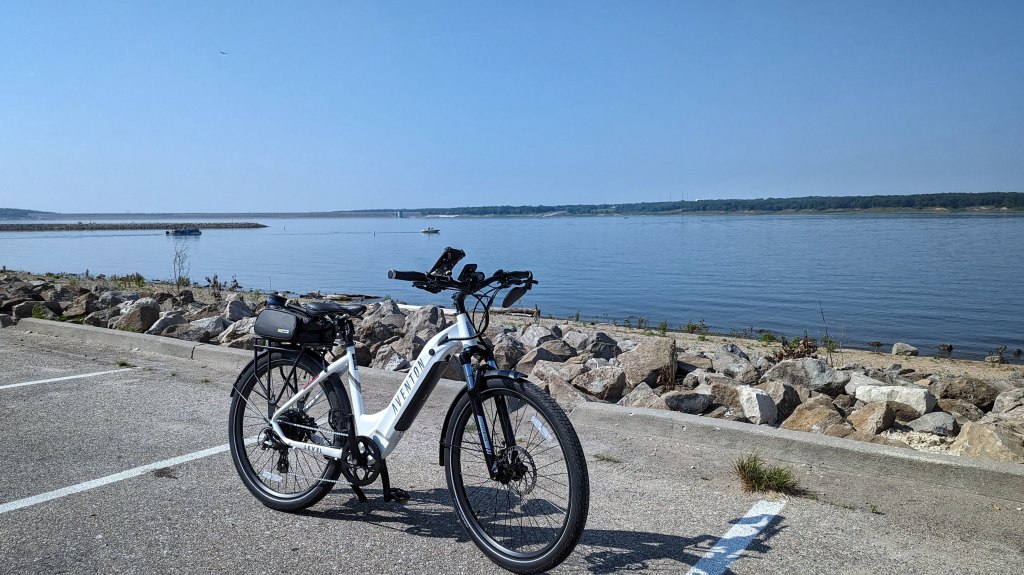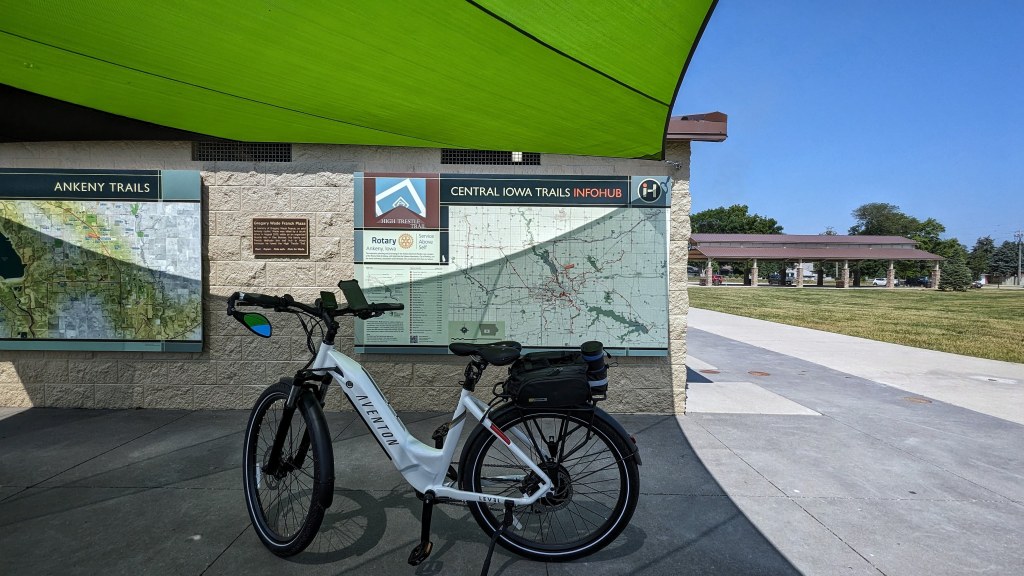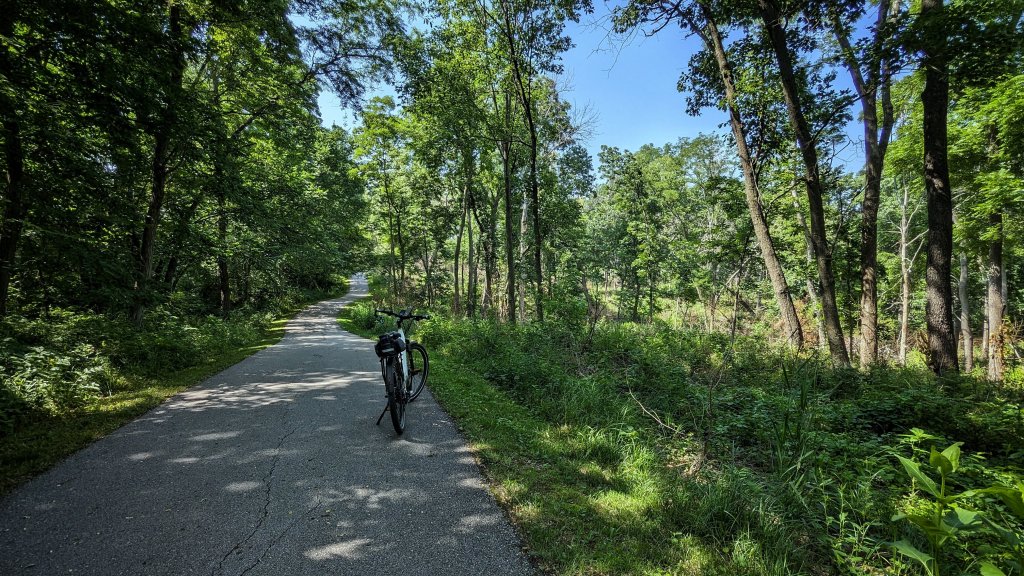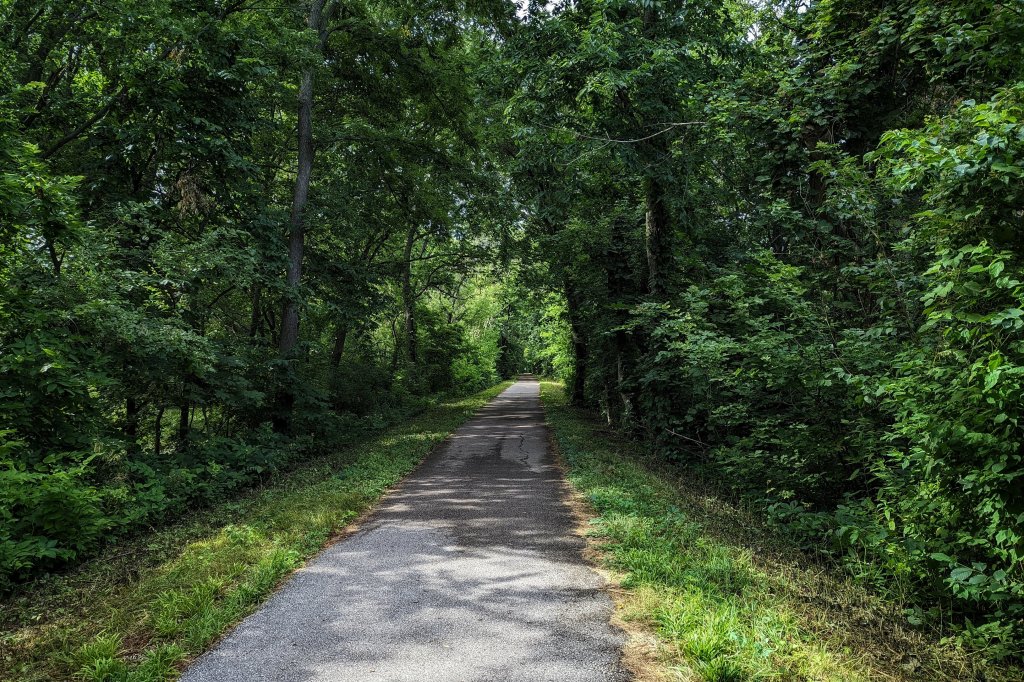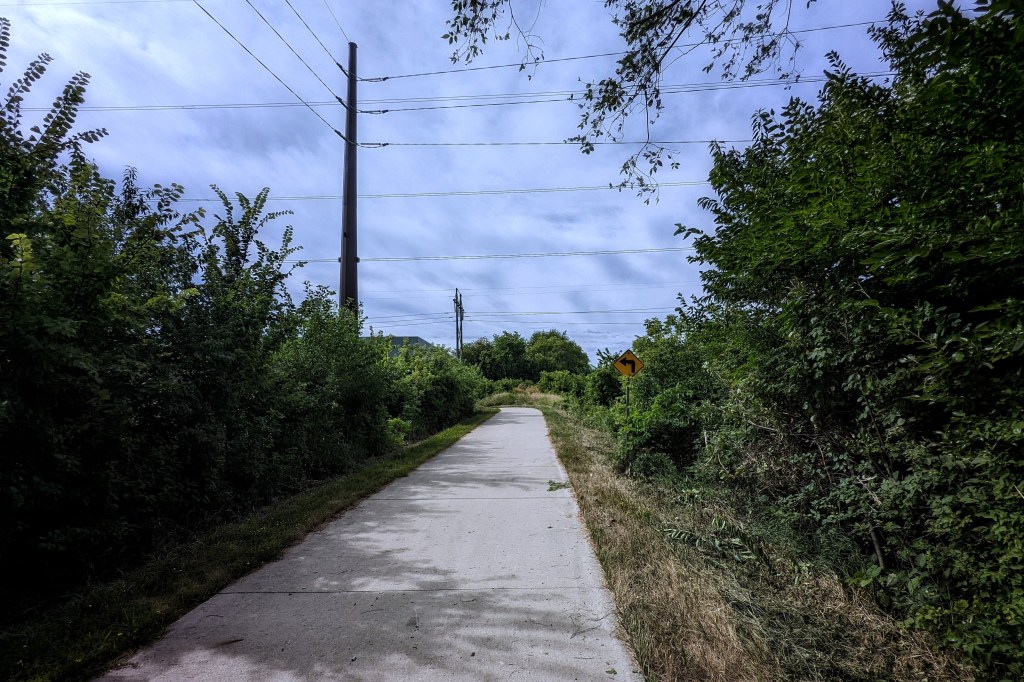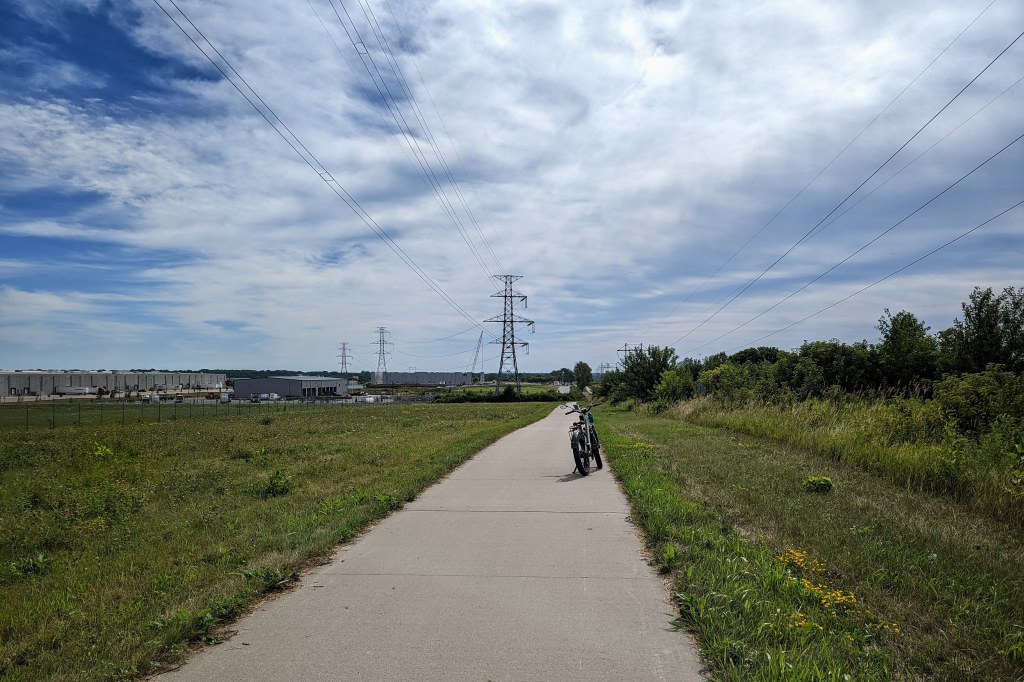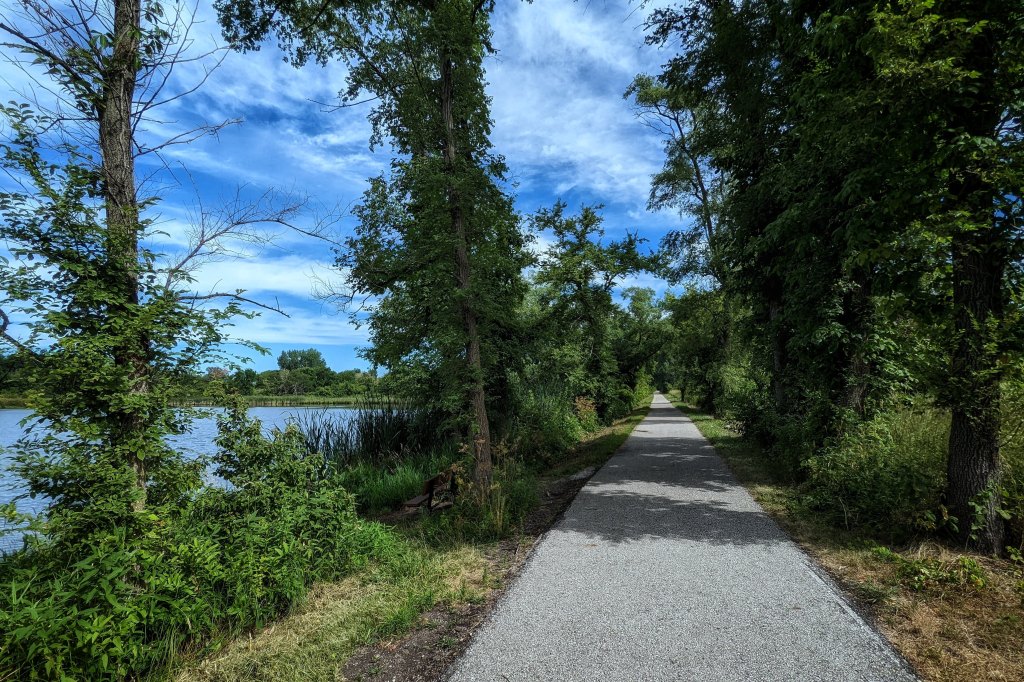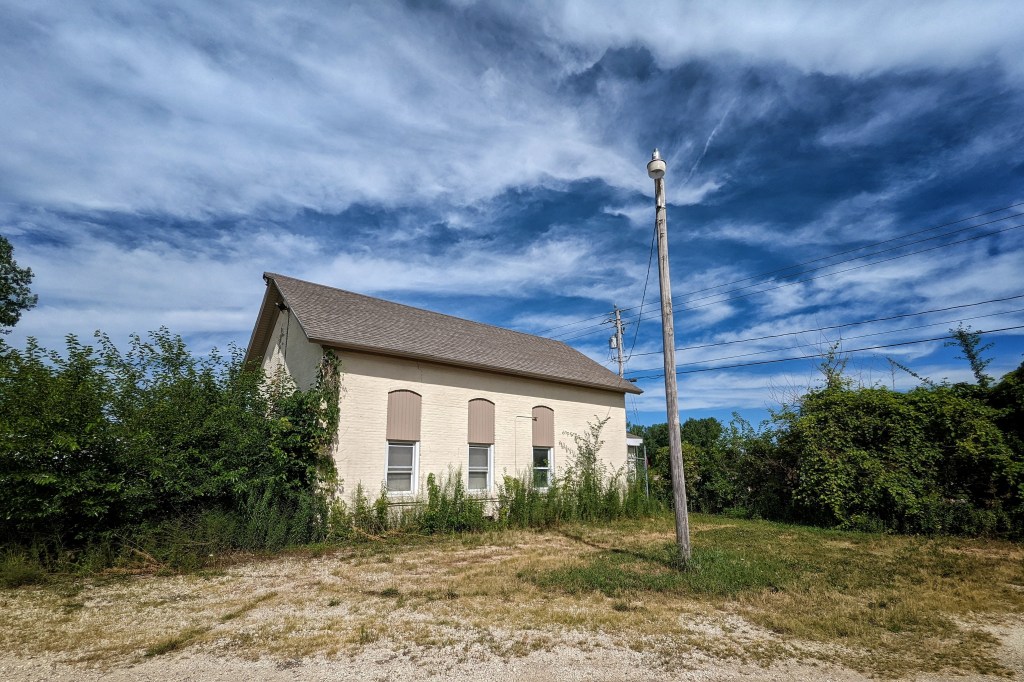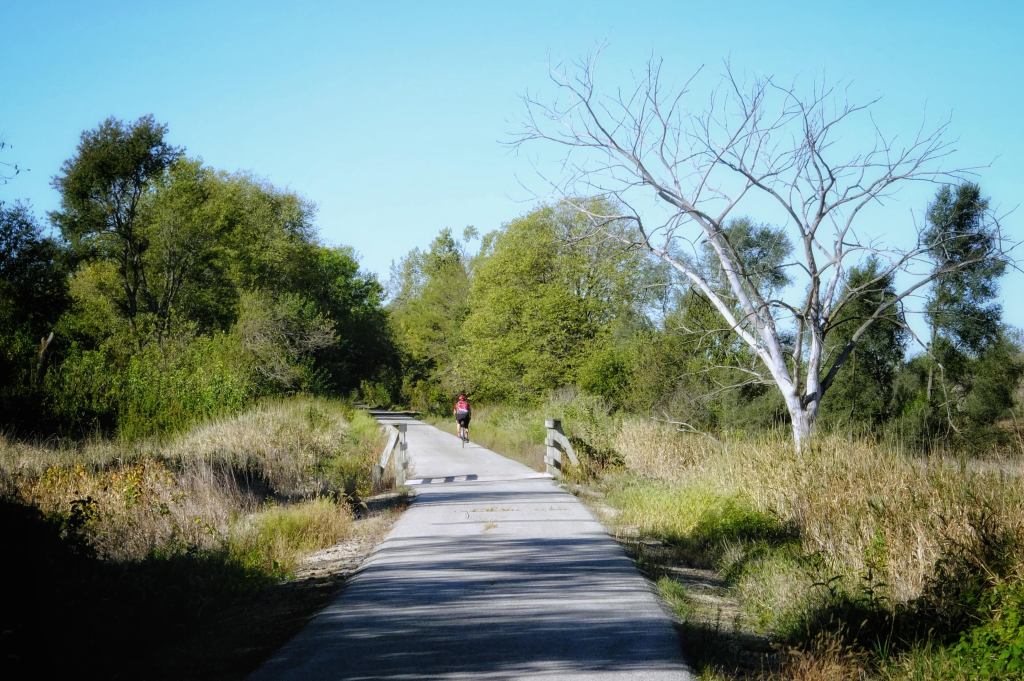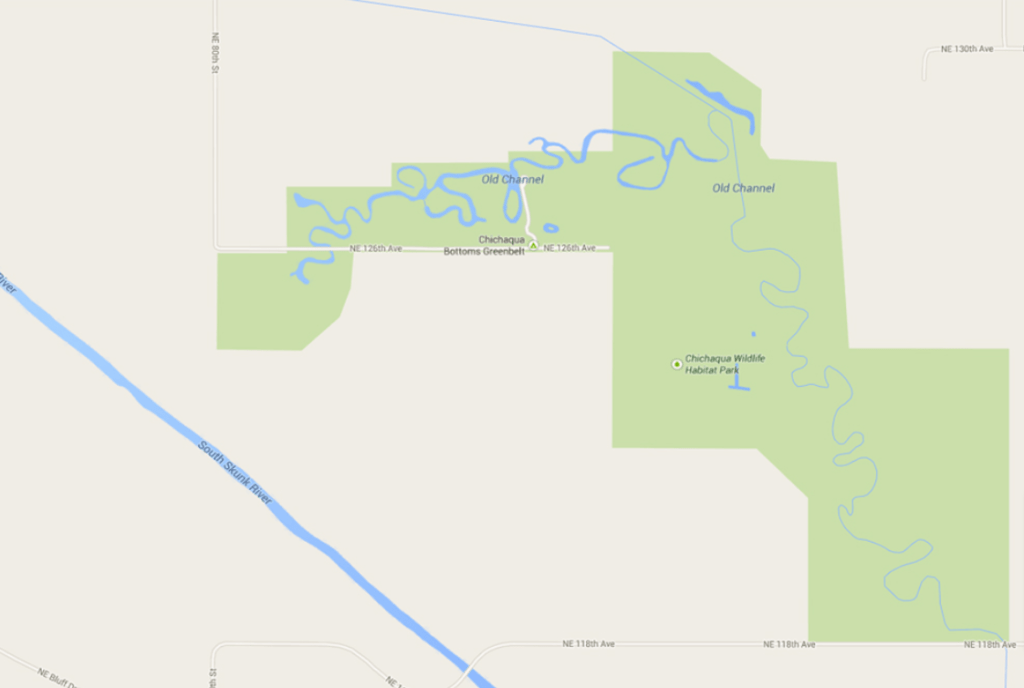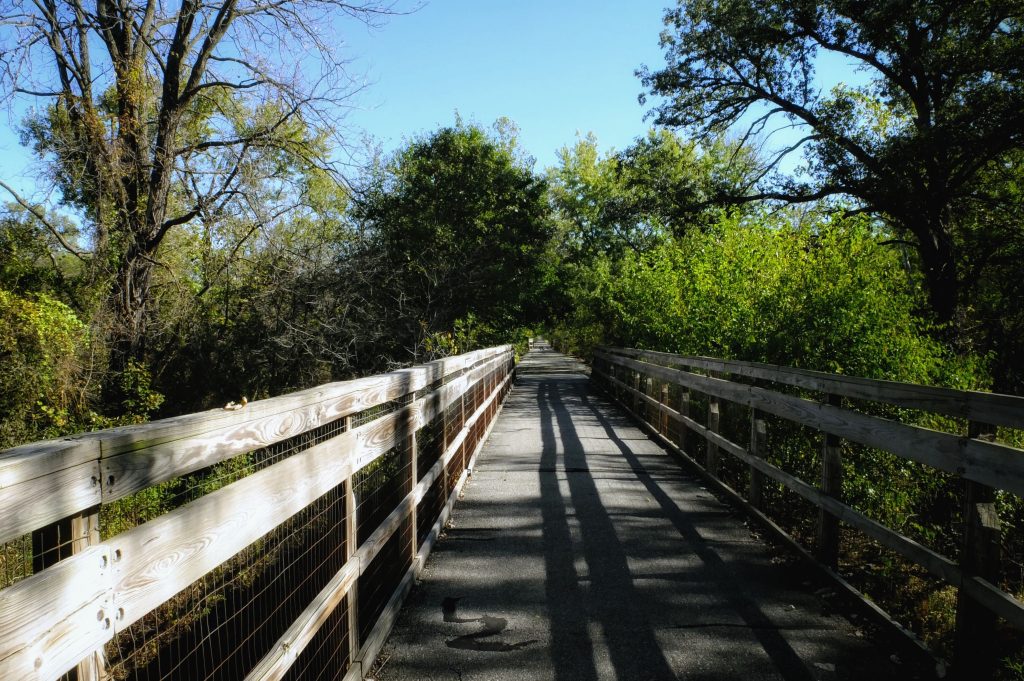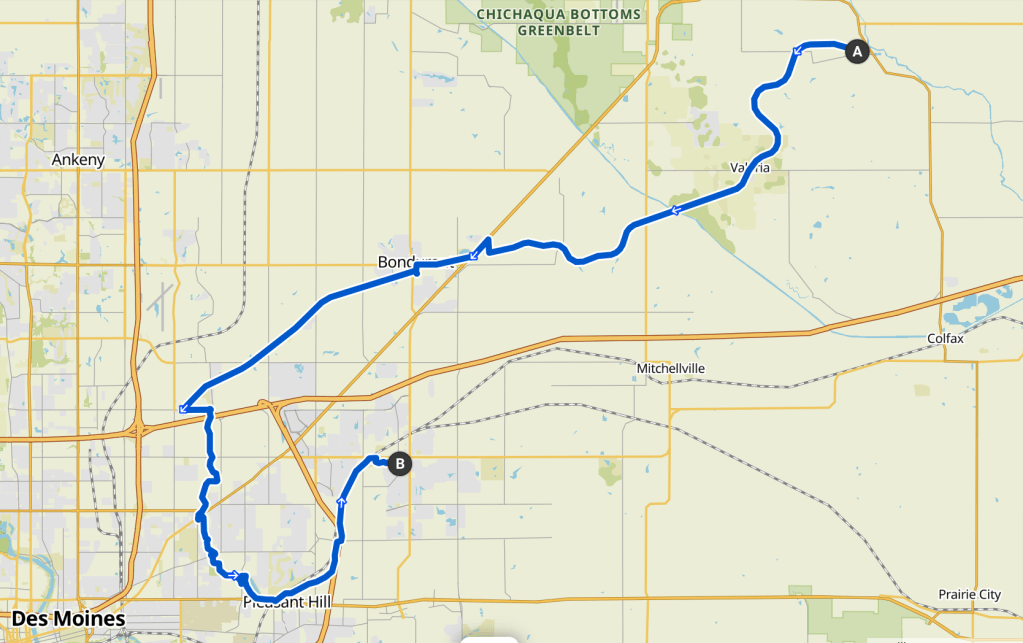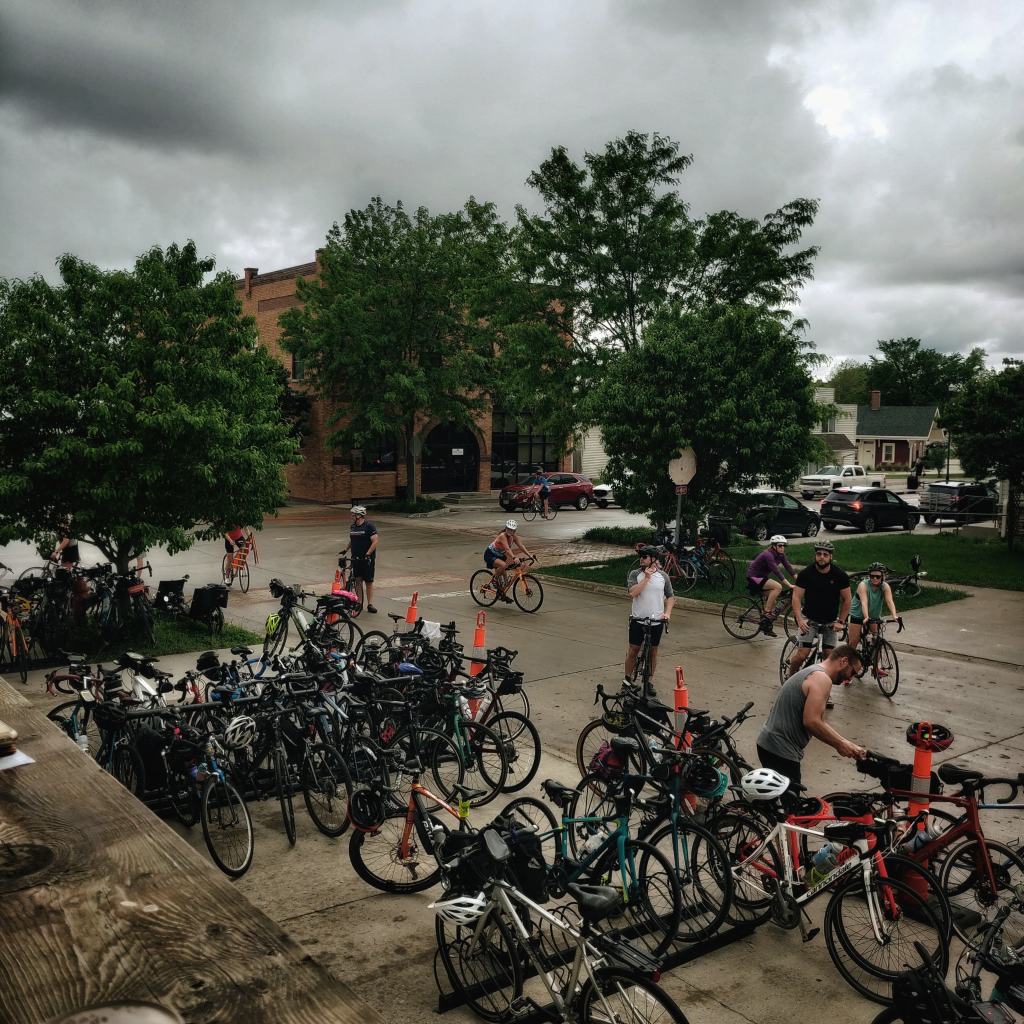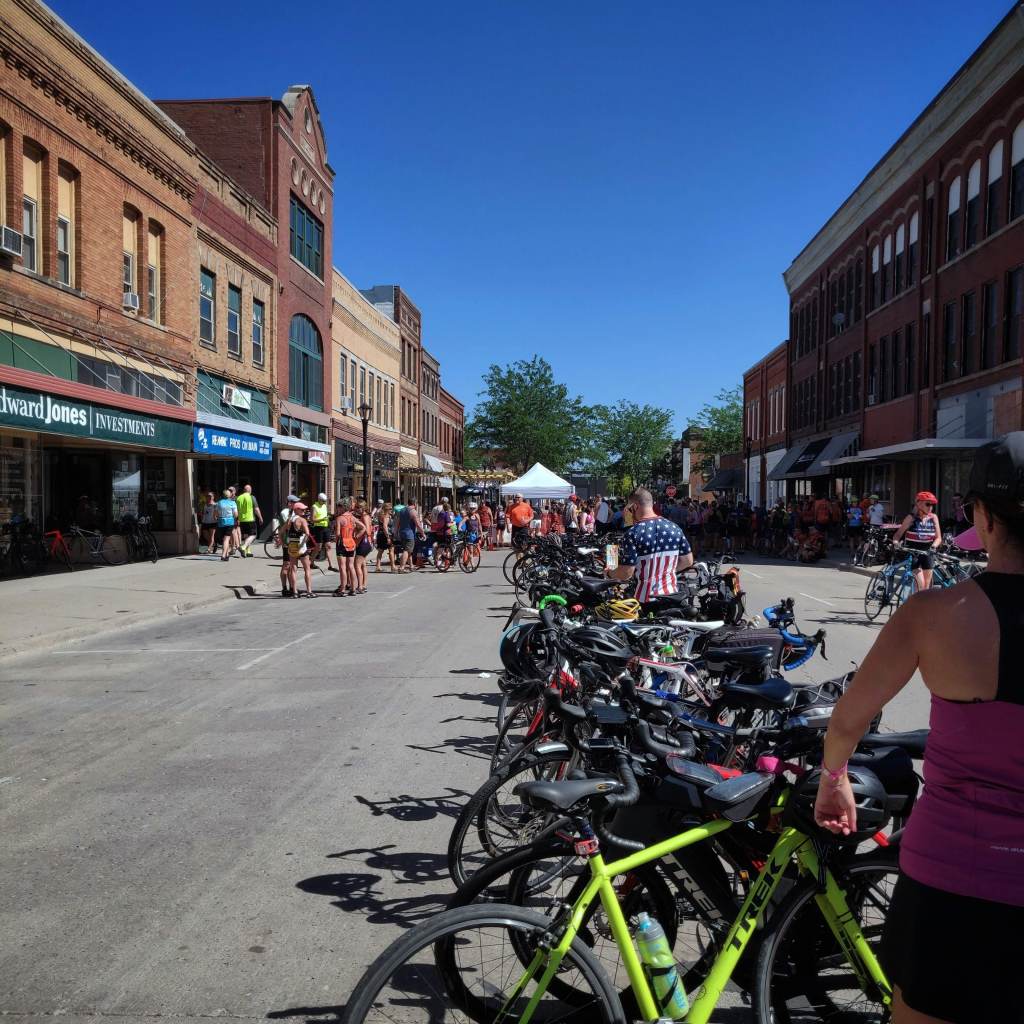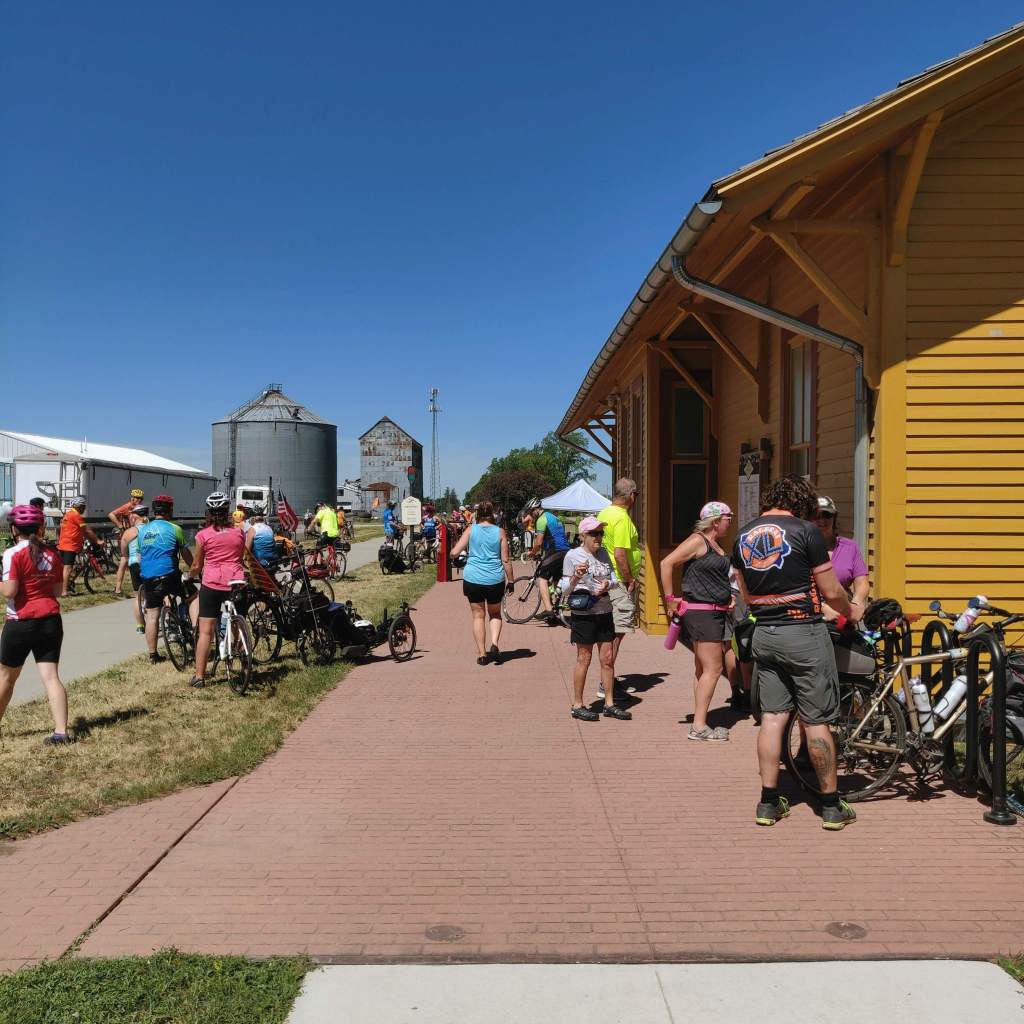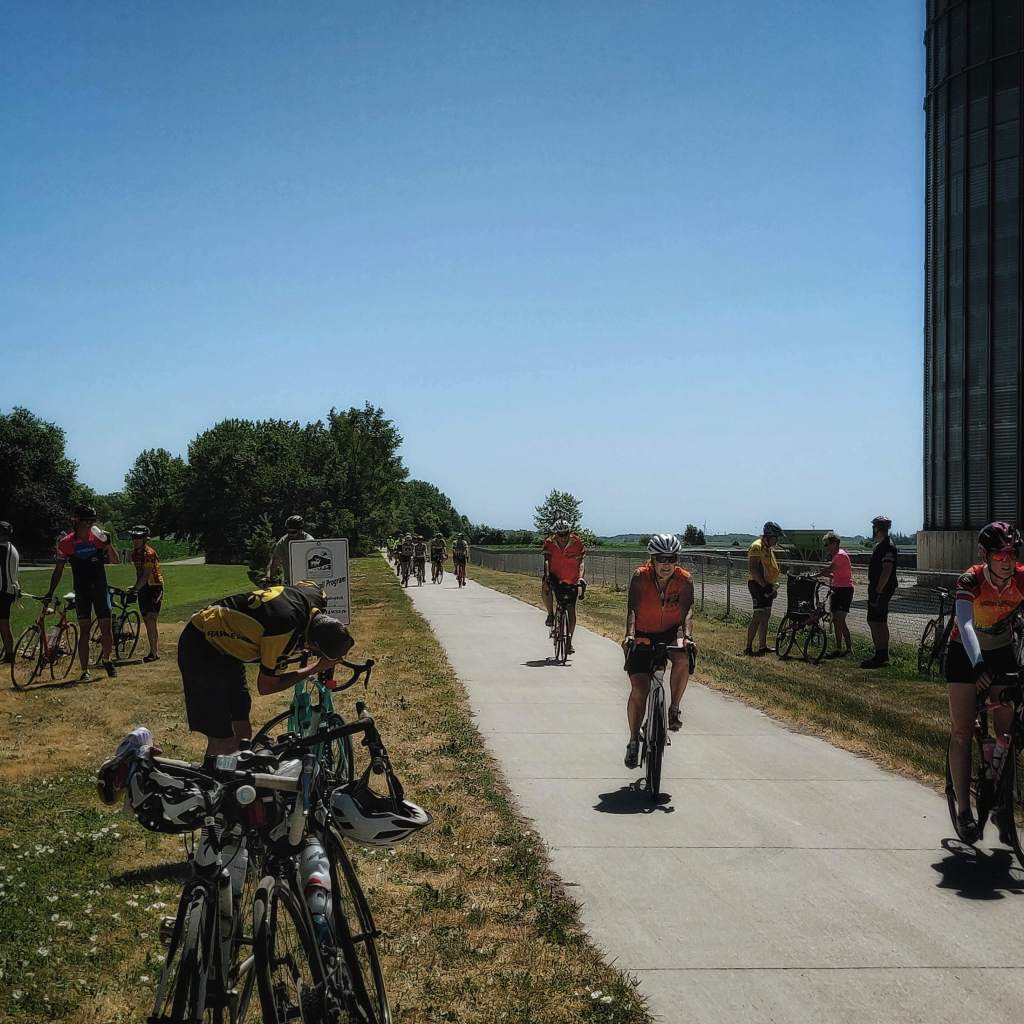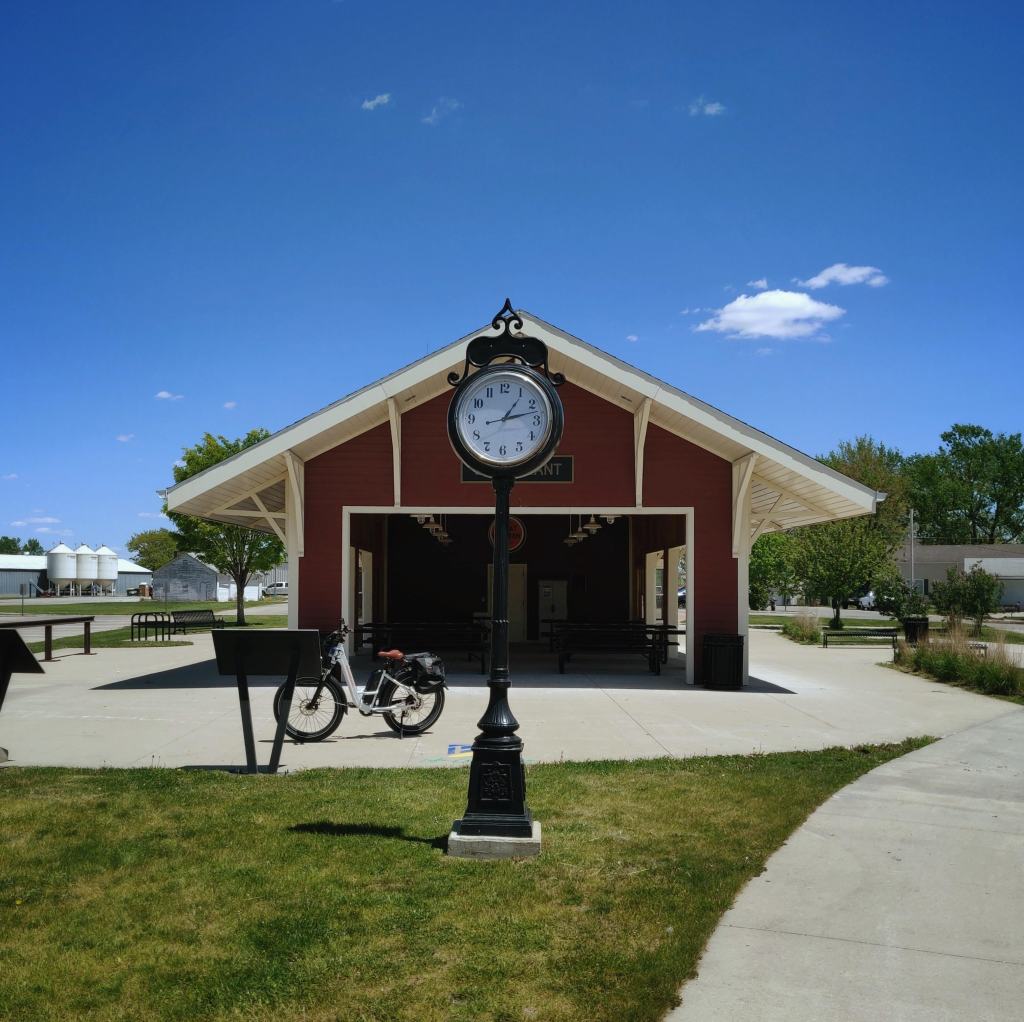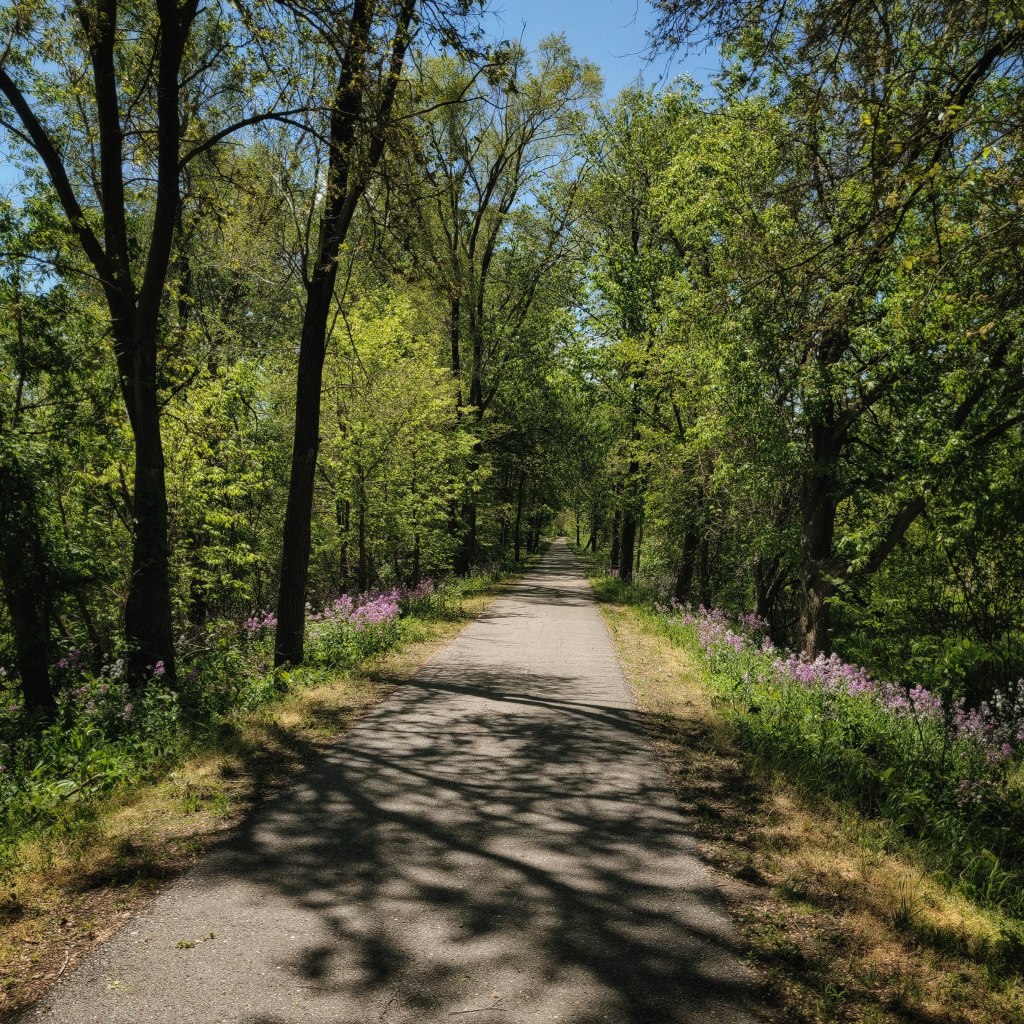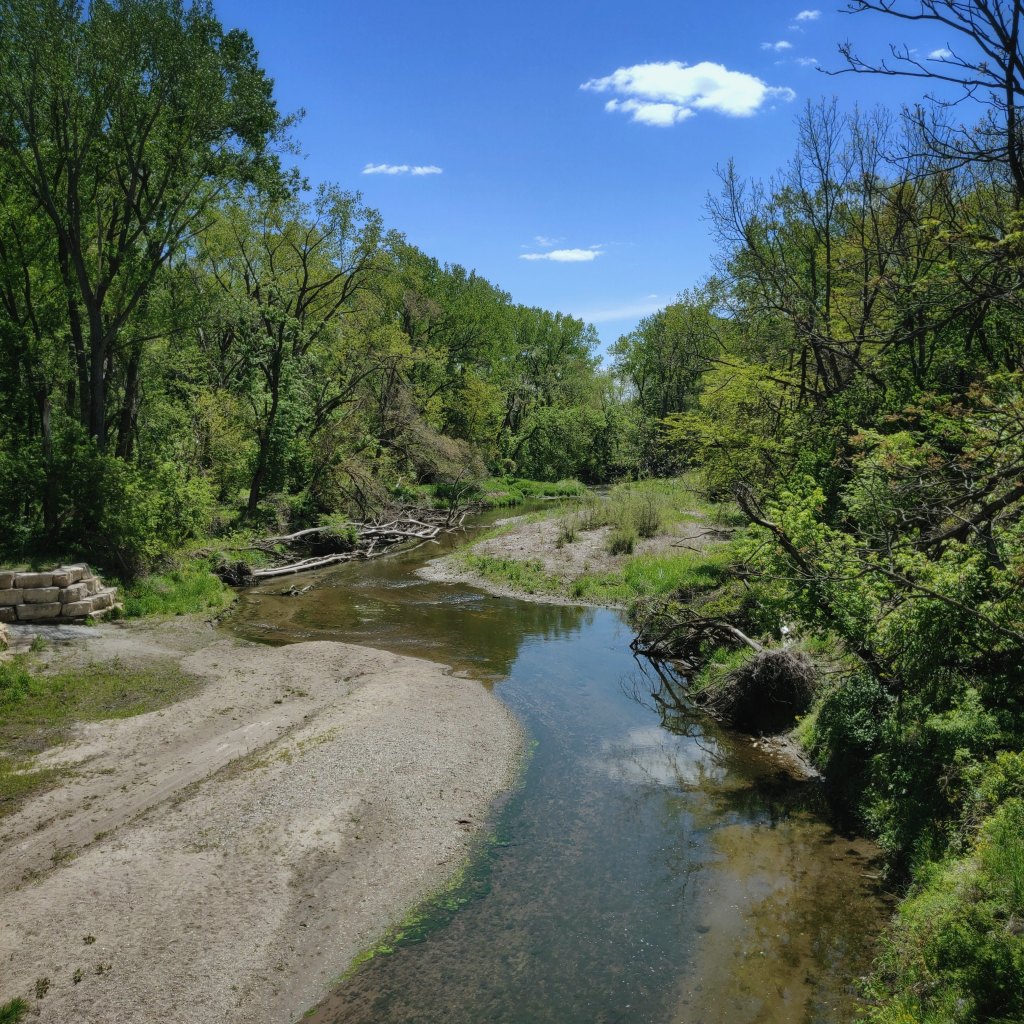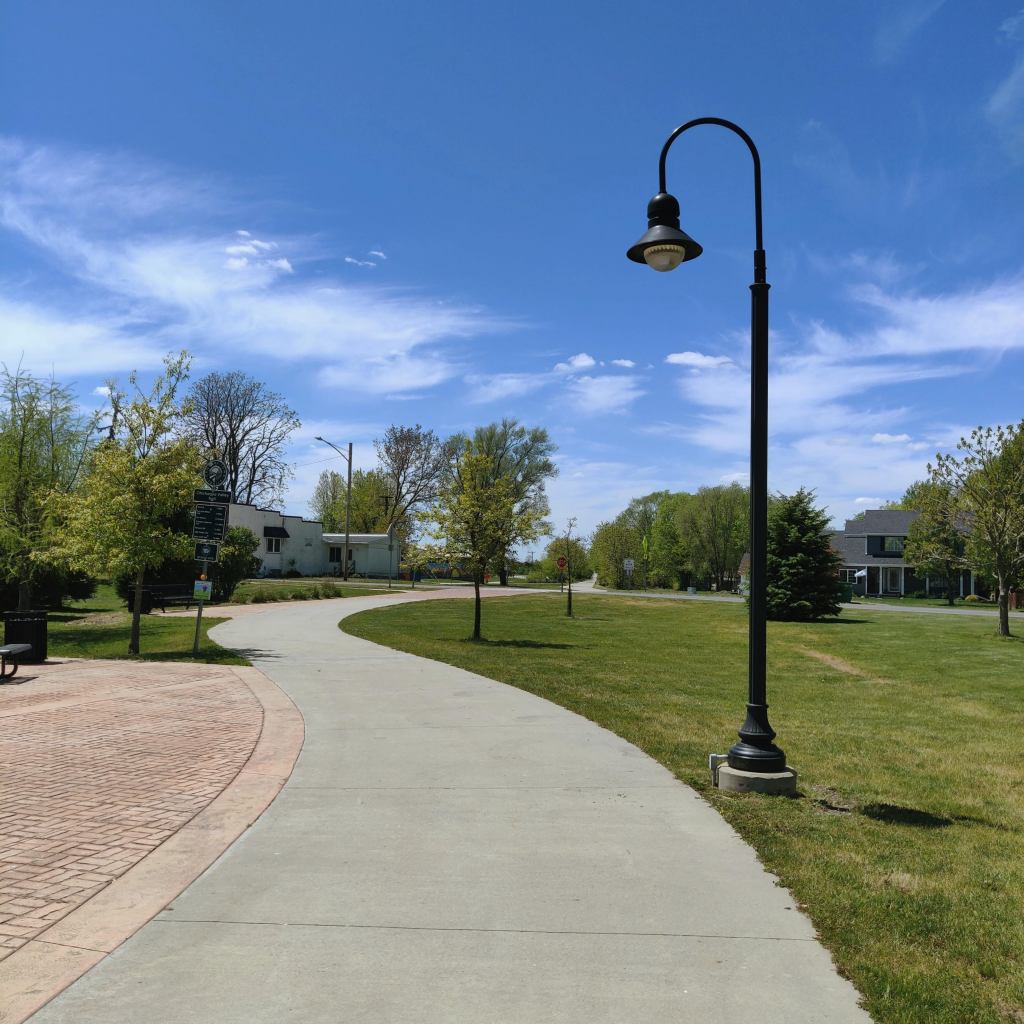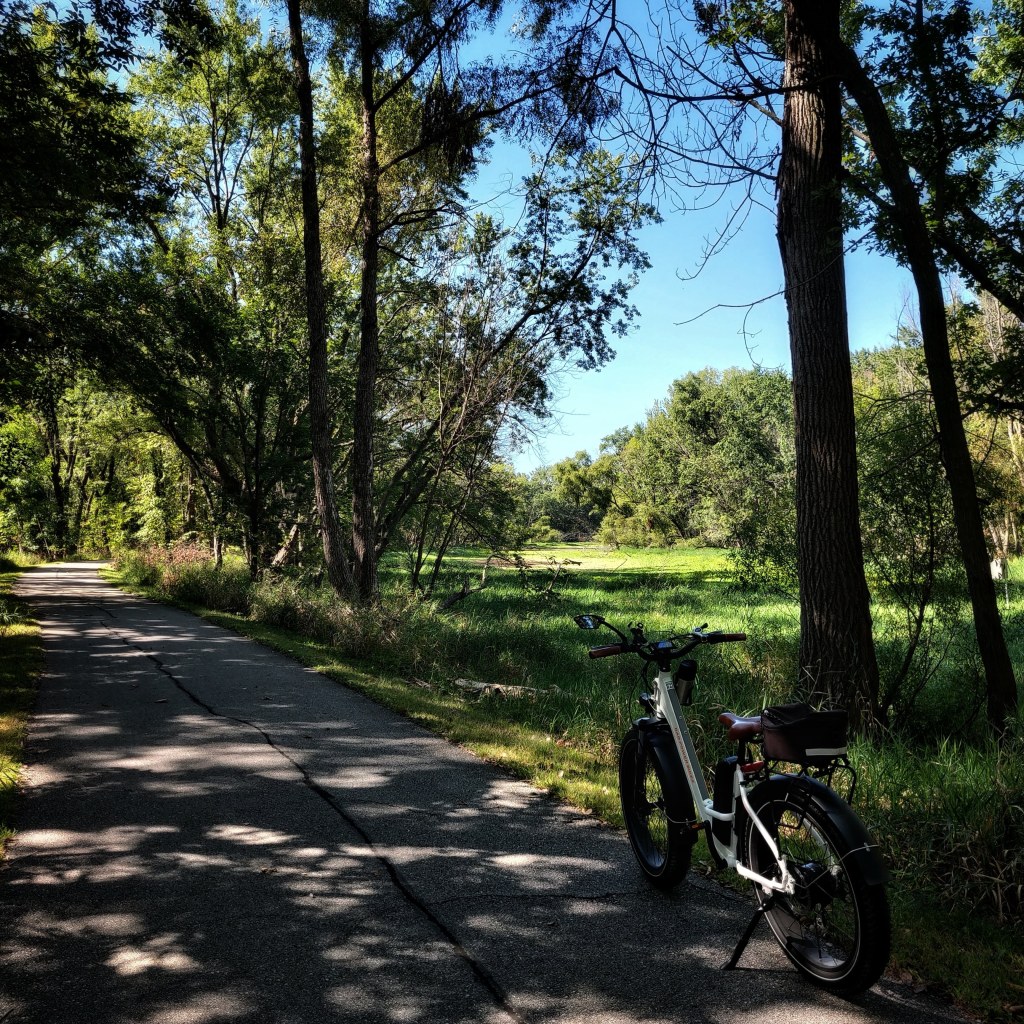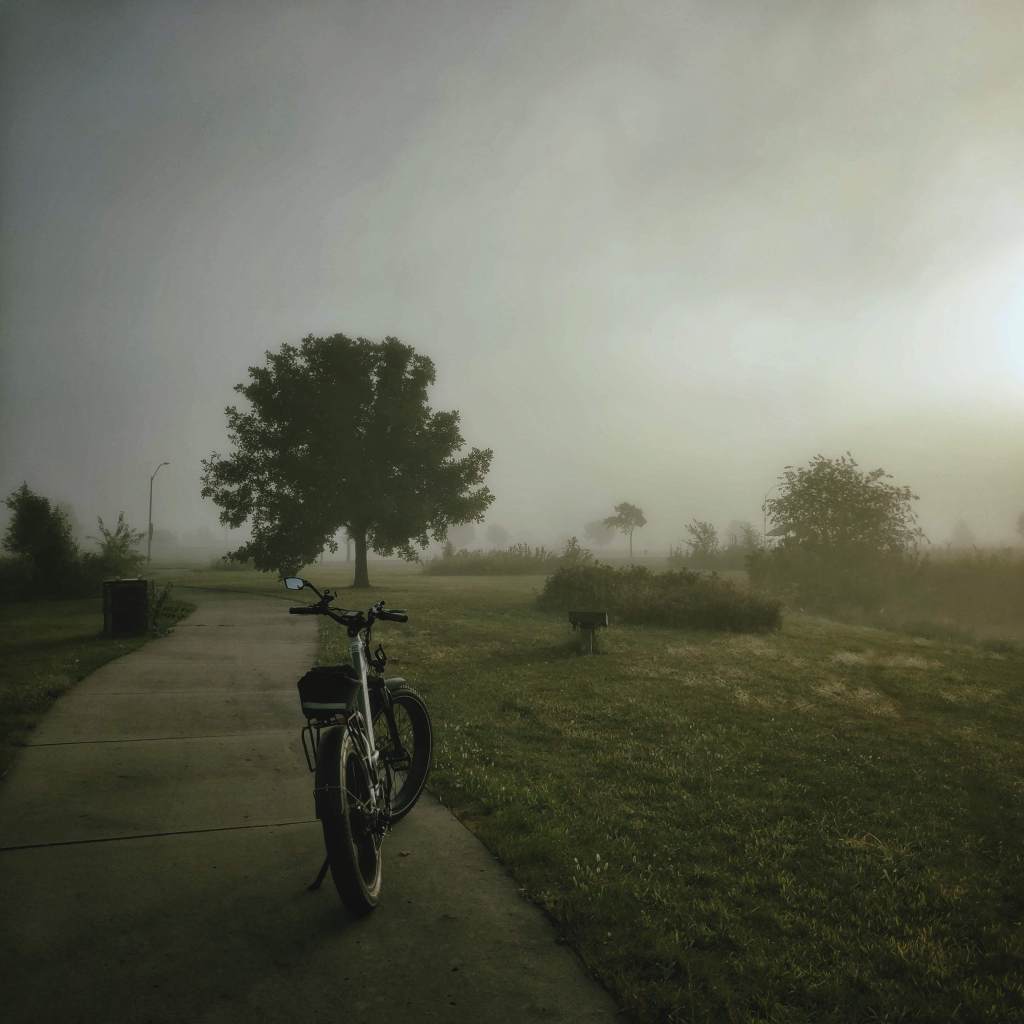It was a lovely day for a bike ride…except for the wind. A sunny Monday (which meant all the decently employed people were off at work, leaving most of the bike trail almost empty), just a few days past peak foliage season, unseasonably warm (fuck you, climate change, there’s no reason for it to be 70F in the Midwest in the third week of October). So yeah, a lovely day for a bike ride…except for the wind

But the wind…lawdy. Steady 15-17 mph; gusts over 30. That kind of wind at your back is grand on a bike; it just pushes you along. But riding into that wind is a massive pain in the ass. And cross-wind? Fuck me with a chainsaw. If you need another reason to dislike the wind, it rips away the autumn foliage. Still, a bike ride seemed like a good idea.

Besides, I’d never ridden across the High Trestle Bridge. I’d ridden most of the High Trestle Trail many times, but the bridge is inconveniently placed near the end of the trail. I like to ride loops; you know, the sort of ride where you circle back to the beginning. The HTT isn’t a loop. It starts in on town, goes through a few other towns, then just ends. When you get to the end, you just turn around and ride the same trail back. That would be fine, except a big section of that trail is what cyclists call boring as fuck. It’s a long, ruler-edge straight, former railroad track that’s almost completely exposed to farmland. Which means there’s absolutely no protection from the sun or the wind. It’s awful.
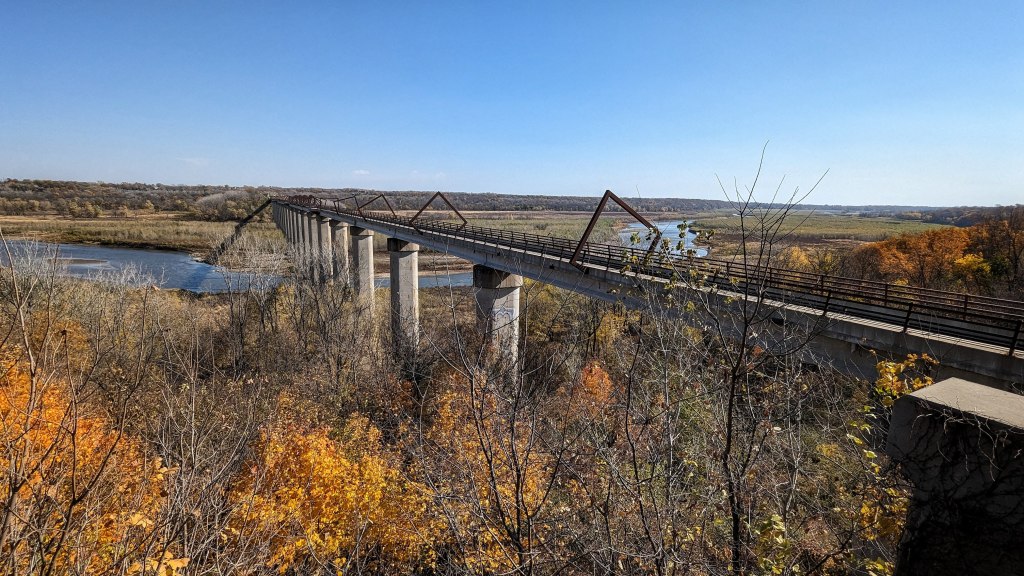
But you can put up with the dull sections so long as there are interesting sections. So we hauled my bike to the far end of the High Trestle Trail and I rode home. The first few miles were lovely; a tree-lined, leaf-strewn trail. Quiet, peaceful, mostly protected from the wind. Then I came to the bridge. It’s a former railroad bridge, spanning the Des Moines River Valley. Half a mile long. One hundred and thirty feet high in the center. Absolutely beautiful. Absolutely exposed to the wind.

Did I mention there were gusts over 30 mph? Did I mention those were cross-winds on the bridge? Even on weekdays, the HHT bridge gets plenty of traffic. The far trailhead is within a few miles of the bridge, and there are bike pubs on both sides. It’s a popular cycling spot. Yesterday was no exception. But those winds.
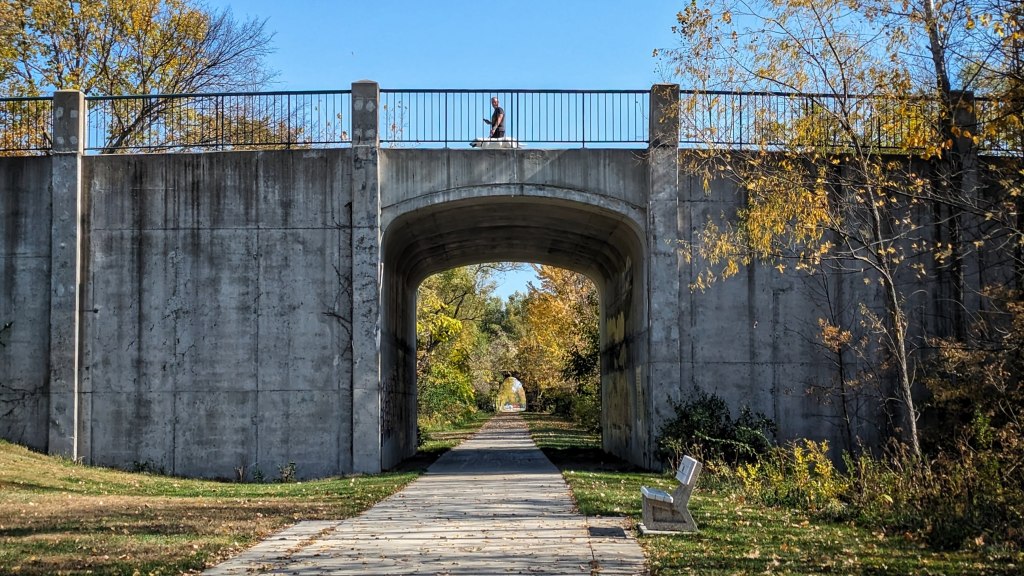
I saw cyclists start on the bridge, then turn around and come back. I saw a four-bike collision in which it appeared the wind blew one cyclist into another, and two other cyclists piled into them. I saw some cyclists get off their bikes and walk them. And there were a few of us who just put our heads down and rode. I’d originally planned to stop at a couple of the observation areas on the bridge–slightly wider spots where you can dismount and enjoy the scenery. But it was too windy. The bridge is wide enough for maybe three bikes to ride side-by-side, but it felt awfully narrow in those winds.

Once across the bridge, the trail became friendlier. It’s a beautifully maintained paved trail, lined with trees, passing by or through a few small farming towns. It was the very best part of the ride; the part in which most of these photos were taken. But then the HHT turns southward and, aside from a few small sections, it’s almost entirely open to the wind. I’ve never been so glad to own an ebike.

My bike has five levels of pedal-assist. It’s so easy to ride, I’ve never felt the need to leave the first level of assist. But into those headwinds, I toggled up to pedal-assist two. Around ten miles straight into steady 15-17 mph headwinds, with gusts of 30 mph. There were very few cyclists riding into the wind; maybe half of the riders I encountered were riding ebikes. The ones who weren’t, looked miserable. I didn’t even think about stopping to take photos.

One of the many nice things about the High Trestle Trail is that there are lots of places to stop and rest. Benches every few miles, small towns with parks, people who live along the trail set out chairs and small tables. I saw at least three bike maintenance locations along the trail, with air pumps and a selection of tools. There are trailheads at both ends of the HHT, with restrooms, picnic tables, and repair stations. The trailhead at the southern end even has porch swings.
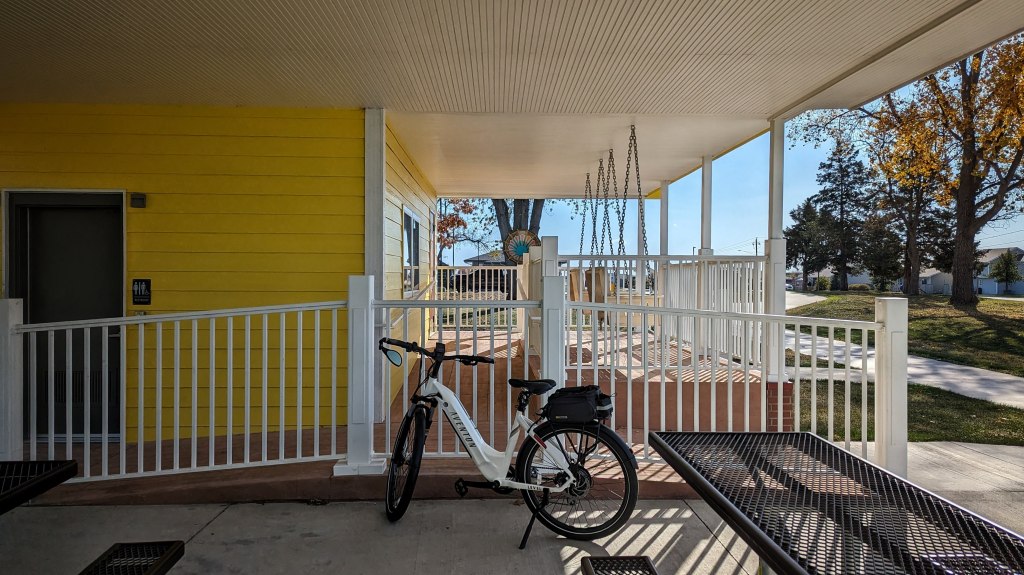
It wasn’t a terribly long ride. Less than 30 miles. A hefty chunk of it was unpleasant and more strenuous than I’d like. But any day you get to spend on a bike is a good day. Yesterday was a good day. Except for the wind.

